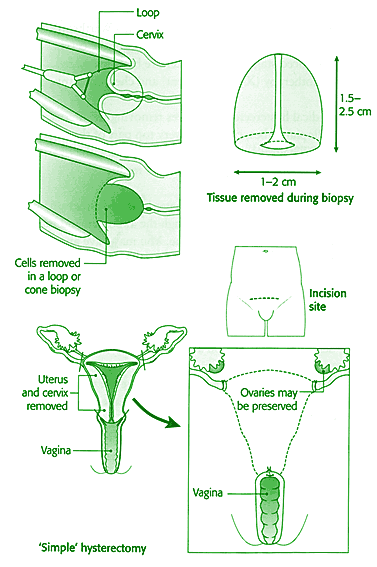|
Loop biopsy, cone biopsy and simple
hysterectomy
• If a cervical cancer is at a very early stage, it may be possible
to treat it by removing just the lower part of the cervix. This may
be performed using an electrical current (or diathermy) in a procedure
known as loop biopsy, or a laser or a knife, in a cone biopsy. It may
be carried out using a local or a general anaesthetic.
• You are likely to notice some discharge and abnormal bleeding
afterwards, and this may continue for several weeks. Although you can
get back to normal the day after the operation, you need to give your
cervix time to heal. Avoid using tampons, and do not have penetrative
sex for 4 weeks. If the bleeding is heavy or the discharge becomes offensive,
see your doctor.
• Occasionally, women are advised to have a 'simple' hysterectomy,
where the uterus and cervix are removed under general anaesthetic. However,
this is a rare treatment for cervical cancer.
• Following simple hysterectomy, a catheter may be passed up the
urethra into the bladder to drain off the urine, and another tube may
drain any bleeding from your abdomen. These tubes may be left in place
for 1-2 days.
• Afterwards, you will be given painkillers. Any non- dissolvable
skin stitches or staples will be removed after 5-7 days, before you
go home. After 6 weeks, your vagina wiU have healed fully, and will
function normally.
|
|
 |




